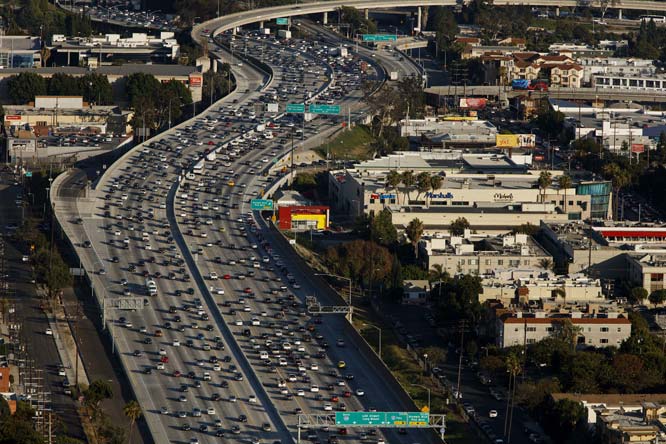 Bloomberg
Bloomberg
Let's take a time out from reports of indictments and threats of impeachment, from nostalgia for the 1940s days of American scientific creativity and ability to get big things done fast ("Oppenheimer") and the 1950s days of American popular culture appealing to every cultural subgroup without the trigger warnings and apologies for past national misdeeds.
Let's turn instead to one of my favorite occupations, trying to understand how life in America has been changing with the help of census data and maps. The map in question shows the percentage of residents in each of the nation's 3,141-or-so counties or county equivalents during the years 2017 and 2021 who were born in that state. It's a measure of mobility — or immobility — over time, and to compare current trends with the past.
The green counties on the map, especially the dark-forest-green counties, have high percentages of people born in another state or indeed in another country. Yellow counties, especially the French's mustard-dark-yellow counties, have high percentages of residents born in that state.
You probably won't be surprised to learn that some counties right on state borders have high percentages of people born in other states, even in areas of low population growth, such as the western panhandle of Oklahoma. You don't have to move far to cross the state line. And you have high percentages of people born in other states in Chattahoochee County, Georgia, site of Fort Moore and not much else. Recruits there come from all over.
But there are some surprises in store.
First, at least for one who grew up in post-World War II America, it's a shock to find that all but a couple of California's 58 counties have above the national average (58%) of residents born in California. The exception is in the San Francisco Bay Area, where Silicon Valley has attracted newcomers and its high real estate prices have prompted nonbillionaire natives to leave.
In contrast, the desert expanses of Clark County, Nevada, and Mohave County, Arizona, (Las Vegas and Lake Havasu) have lots of people from elsewhere, since they've been growing rapidly since the 1980s and were sparsely populated back then.
California attracted millions of Midwesterners from 1945 to 1975 and millions of Mexicans from 1975 to 2007. But beautiful scenery and wonderful climate haven't overcome the repellent effect of bad public policy, evidenced by high taxes and housing prices combined with mass homeless populations and disorder.
A second observation is that the influx of high-education in-migrants, in an era when political preferences are highly correlated with education levels, has made some states more Democratic. Silicon Valley is one example, the Denver suburbs and mountain ski towns in Colorado another, the Research Triangle of North Carolina a third.
But there are also places where low taxes have attracted migrants. Florida's Gulf Coast is a prime example, and so are its I-4 corridor from Tampa to Orlando and the whole Atlantic Coast and spreading north into the Carolinas. Interstates 75 and 95 have been 21st century underground railroads, liberating Northerners from wintry snows and confiscatory taxes.
You see similar phenomena in southern New Hampshire, in the one dark-green county in northeast Pennsylvania (an hour from Manhattan's George Washington Bridge), in the southeast corner of South Dakota.
However, there are two high-growth areas where, despite in-migration, the proportions of those born in other states are not outsize.
One is Texas. There, the only big proportions of out-of-staters are not in central Houston, Dallas and Austin, but in their exurban counties, with many high-education and Asian new residents. The other is Utah, whose Mormon high family formation and high birth produce booming 1950s-style growth without huge net influxes.
Each state has maintained, against some expectations, its special character and political culture. Texas has ignored the yearnings of national press reporters and is now in its fourth solid Republican decade. Utah's Mormon majority, with its high social connectedness, is repelled by Donald Trump and is exploring alternatives to its pre-2015 status as the nation's most Republican state.
Where Trump has had a positive appeal is in long-settled rural and small-town counties where very large majorities were born in the same state. Many of the French's mustard-yellow counties in Pennsylvania, Ohio, Michigan, Wisconsin and Iowa were once labor union strongholds that leaned Democratic but since 2015 have trended Trumpward — to varying extents.
We political demographers, based in metro Washington where almost everyone is "from elsewhere," tend to put our spotlight on places with changing populations. But the voters in places where just about everyone is "from here" surprised us by swinging electoral votes to Donald Trump in 2016 and falling just short of doing so in 2020. They arguably made the difference both times. Maybe they will again in 2024.


 Contact The Editor
Contact The Editor
 Articles By This Author
Articles By This Author